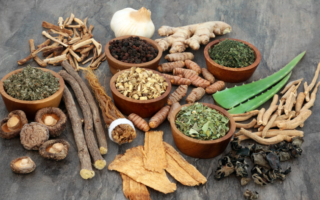It’s no secret that at Hello Ginseng we love the superfood ginseng and want to share the goodness that it has to offer. Did you know that it’s a great functional food to add into your cooking? Keep reading as we go through the dos and don’ts of cooking with ginseng.
Why add ginseng into your meals?
Who doesn’t love a meal that’s oozing with extra nutrients? Ginseng is a great way to add extra fibre, antioxidants, protein and other nutrients into your meals. It can take a meal from minimal nutrient content to highly nutritious with just a few added spoonfuls of ginseng powder (Oliynyk & Oh, 2013).
Does cooking kill the nutrients?
Traditionally ginseng is dried before it is ground down to powders and extracts. So no, cooking ginseng in heat does not reduce or diminish its nutrient content (Shonte et al., 2020). When most nutrients are cooked it denatures them, meaning it reduces them to a broken down form. This happens naturally to uncooked foods during the digestion process in our bodies, so essentially cooking with nutrients is just breaking them down before we consume them. Some of the individual nutrients in ginseng can be affected with different cooking methods, with research showing that steaming or dry heating retains more nutrients than boiling (Lee et al., 2017). Studies have shown that heating ginseng increases the natural levels of pectin as well as other nutrients (Hyun et al., 2020).
What does it taste like?
Ginseng is known for its bitter but subtle taste. While it’s definitely noticeable it’s not overbearing against other flavours, nor is it intense. Because of its subtle taste, it is a great ingredient to combine with other ingredients as it compliments other flavours well.
Best ways to add ginseng into cooking
There’s no right or wrong way to cook with ginseng, it mostly comes down to personal preference and taste. A good way to begin is by starting with smaller amounts in your meals and working your way up to adding higher doses. If ginseng is a flavour you’re not used to, we suggest adding it into flavour rich meals such as bolognaise, creamy sauces, roasts, seasoning for chips and vegetables or into smoothies.
Flavours it goes well with
There are plenty of flavours that ginseng compliments nicely, some of our tried and tested favourites include garlic, potato, leek, tomato, banana, maple, butter, turkey and chicken. Whether it’s salty, sweet or sour, ginseng compliments these types of flavours nicely and still lets the intended flavour overpower the dish.
What to avoid
While they don’t need to be avoided completely, some sweeter foods can be a bit tricky to get the right balance with. As ginseng is a bitter taste, it needs to be balanced with just the right amount of sweet or salty for it to thrive as a flavour. For example, mixing ginseng with a sweet but deeper flavour such as chocolate works well as the chocolate overpowers the ginseng, whereas combining it with a lighter sweet flavour like marshmallow doesn’t balance it out quite as well.
Where to buy ginseng?
Our favourite ginseng is Bing Han’s ginseng powder. It is 100% pure ginseng powder and one of the highest quality available. They have been around for over 30 years and own all their own crops, farms and manufacturing plants. As a company they also do a lot to support the environment and give back to the community.
Get on the ginseng train
What are you waiting for? The only thing you’ve got to lose by adding ginseng into your meals are some of the health issues weighing you down! Start with a little sprinkle of goodness added to your meals, it might be one of the easiest and most effective health efforts you’ve made in a while!
References
Hyun, S. Kim, S. Seo, H. Youn, S. Kyung, J. Lee, Y. In, G. Park, C. Han, C. (2020). Physiological and pharmacological features of the non-saponin components in korean red ginseng. Journal of Ginseng Research. Vol. 44, Issue 4, July 2020, 527-537. https://doi.org/10.1016/j.jgr.2020.01.005
Lee, S., Choi, Y., Jeong, H. S., Lee, J., & Sung, J. (2017). Effect of different cooking methods on the content of vitamins and true retention in selected vegetables. Food science and biotechnology, 27(2), 333–342. https://doi.org/10.1007/s10068-017-0281-1
Oliynyk, S., & Oh, S. (2013). Actoprotective effect of ginseng: improving mental and physical performance. Journal of ginseng research, 37(2), 144–166. https://doi.org/10.5142/jgr.2013.37.144
Shonte, T. T., Duodu, K. G., & de Kock, H. L. (2020). Effect of drying methods on chemical composition and antioxidant activity of underutilized stinging nettle leaves. Heliyon, 6(5), e03938. https://doi.org/10.1016/j.heliyon.2020.e03938




